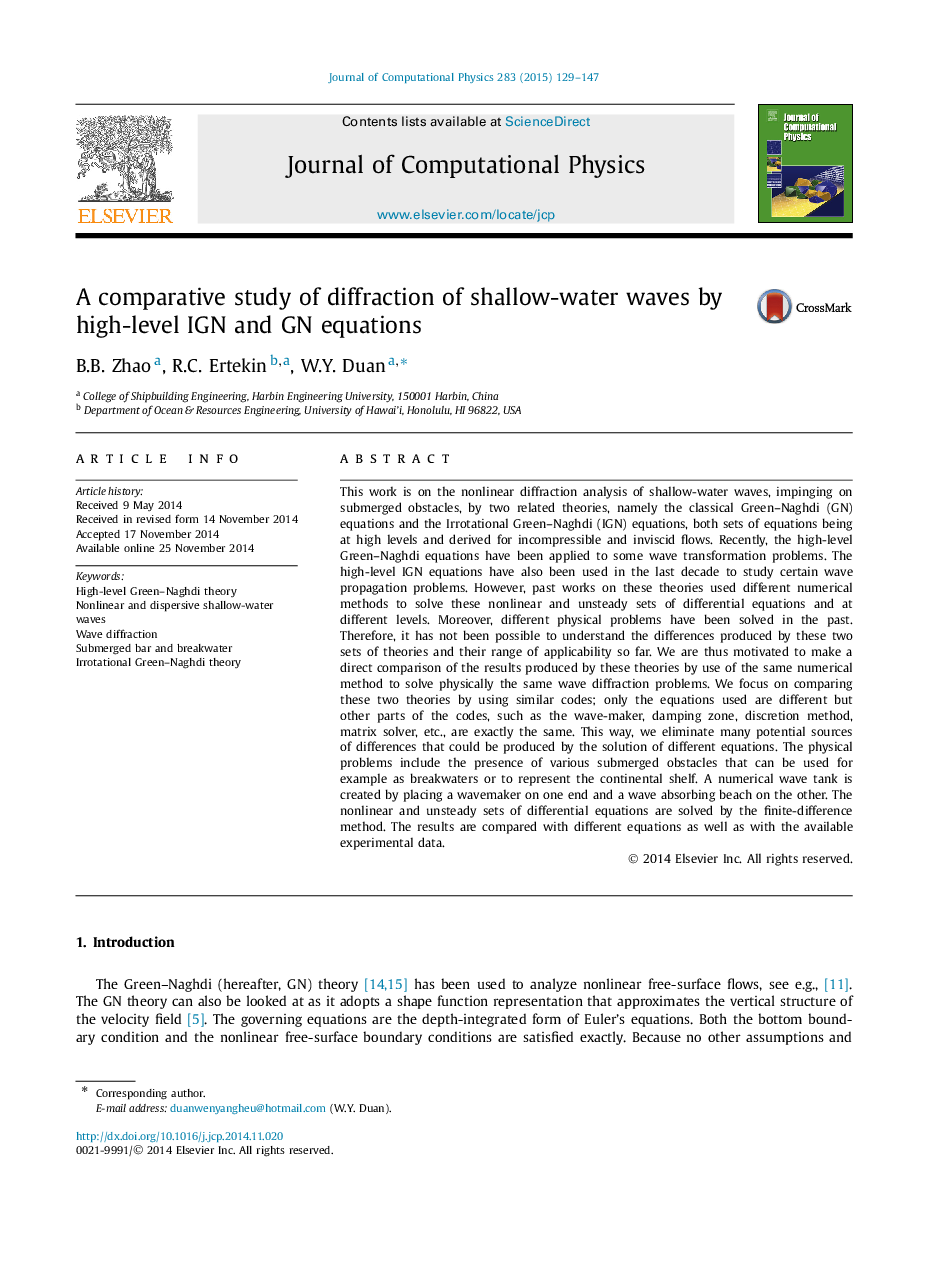| Article ID | Journal | Published Year | Pages | File Type |
|---|---|---|---|---|
| 6931800 | Journal of Computational Physics | 2015 | 19 Pages |
Abstract
This work is on the nonlinear diffraction analysis of shallow-water waves, impinging on submerged obstacles, by two related theories, namely the classical Green-Naghdi (GN) equations and the Irrotational Green-Naghdi (IGN) equations, both sets of equations being at high levels and derived for incompressible and inviscid flows. Recently, the high-level Green-Naghdi equations have been applied to some wave transformation problems. The high-level IGN equations have also been used in the last decade to study certain wave propagation problems. However, past works on these theories used different numerical methods to solve these nonlinear and unsteady sets of differential equations and at different levels. Moreover, different physical problems have been solved in the past. Therefore, it has not been possible to understand the differences produced by these two sets of theories and their range of applicability so far. We are thus motivated to make a direct comparison of the results produced by these theories by use of the same numerical method to solve physically the same wave diffraction problems. We focus on comparing these two theories by using similar codes; only the equations used are different but other parts of the codes, such as the wave-maker, damping zone, discretion method, matrix solver, etc., are exactly the same. This way, we eliminate many potential sources of differences that could be produced by the solution of different equations. The physical problems include the presence of various submerged obstacles that can be used for example as breakwaters or to represent the continental shelf. A numerical wave tank is created by placing a wavemaker on one end and a wave absorbing beach on the other. The nonlinear and unsteady sets of differential equations are solved by the finite-difference method. The results are compared with different equations as well as with the available experimental data.
Keywords
Related Topics
Physical Sciences and Engineering
Computer Science
Computer Science Applications
Authors
B.B. Zhao, R.C. Ertekin, W.Y. Duan,
